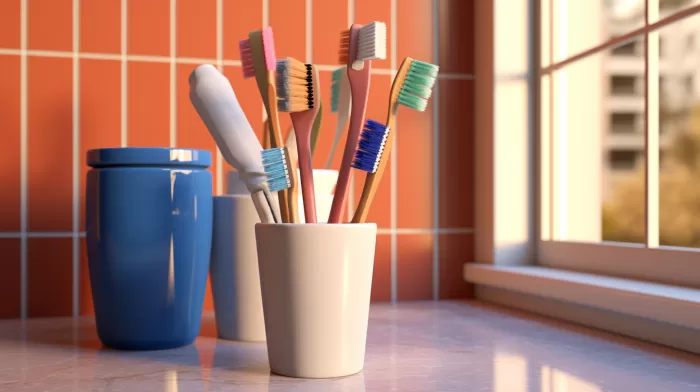Imagine unknowingly exposing yourself to harmful bacteria every single morning. You’re probably thinking, there’s no way that’s happening, right? Unfortunately, it’s more common than you think. The good news is that you don’t have to be one of those people. The trick is to keep your toothbrush someplace other than the bathroom.
A study at Quinnipiac University in Connecticut shows that when toothbrushes are stored in the bathroom, they can pick up microscopic pathogens. These harmful bacteria can then enter your body through your mouth when you brush your teeth.
The Bacteria Lurking on Your Toothbrush
“The main concern is not with the presence of your own fecal matter on your toothbrush but rather when a toothbrush is contaminated with fecal matter from someone else, which contains bacteria, viruses, or parasites that are not part of your normal flora,” warns researcher Lauren Aber.
In the study, more than half of all the brushes were home to fecal coliform, a bacteria that can cause intestinal infections, dysentery, hepatitis, and cholera.
And the bad news doesn’t stop there. If you use an electric toothbrush, you should choose one with a solid-head. Research at the University of Texas Science Center at Houston shows that hollow-headed brushes are more often contaminated with microorganisms.
Toothbrush Covers and Cleaning Attempts Are Not Enough
You might think that using a toothbrush cover can help protect it from these harmful bacteria. Unfortunately, the dark dampness under a cover actually makes it easier for pathogens to grow on your brush. Furthermore, the researchers found that washing off your brush with hot water or soaking it in mouthwash doesn’t help either.
In the Texas study, researchers found that toothbrushes were often covered with pathogens linked to colon cancer, heart disease, and gum infections.
Protecting Yourself from Toothbrush Bacteria
How can you protect yourself against these dangerous bacteria? One of the best ways is to let your toothbrush dry out between uses completely. This discourages the growth of microorganisms.
One suggestion is to rotate between at least three brushes so each one can dry for at least 24 hours before using it again. While it may feel strange, try keeping your toothbrushes in a cup in a room other than the bathroom, like a home office. This allows them to dry faster and keeps them away from the toilet.
When you flush your toilet, it can spray tiny droplets into the air and onto surfaces, including your toothbrush. The airborne droplets can contain harmful bacteria, making it even more important to store toothbrushes away from the bathroom.
Bonus Tips for Hygienic Toothbrush Storage
Here are some additional tips to help keep your toothbrush as sanitary as possible:
- Avoid using communal toothbrush holders, as bacteria can spread from one brush to another. If you share a bathroom, consider having individual storage options for each person’s toothbrush.
- Replace your toothbrush every three to four months, or sooner if the bristles become frayed. Old toothbrushes can harbor bacteria and become less effective at cleaning your teeth.
- When traveling, consider using disposable toothbrushes or a toothbrush sanitizer. These devices use ultraviolet light to kill bacteria on the bristles.
- If you’ve recently been sick, replace your toothbrush. Bacteria from your illness can linger on the bristles, putting you at risk of reinfection.
By making some simple changes to your toothbrush storage and usage habits, you can avoid dangerous infections and improve your overall oral hygiene. So, next time you reach for that toothbrush, remember this advice and make sure you’re brushing bacteria-free.



